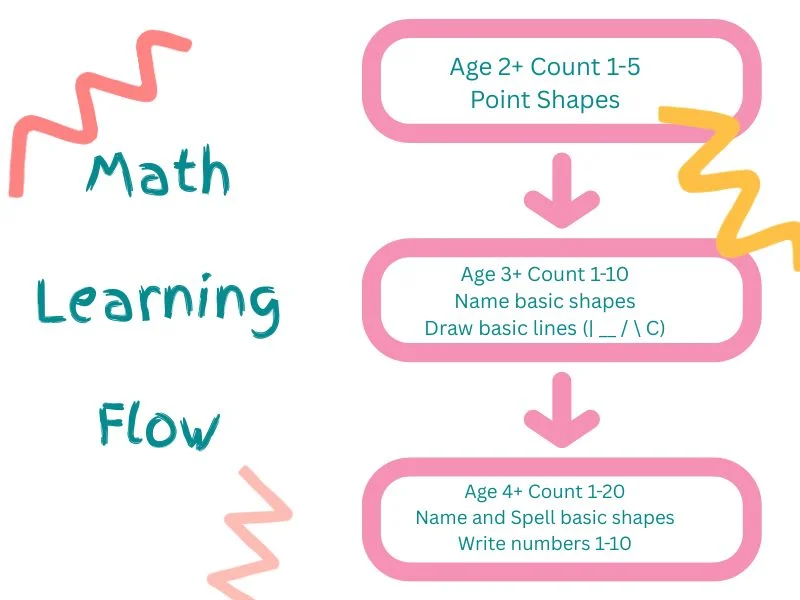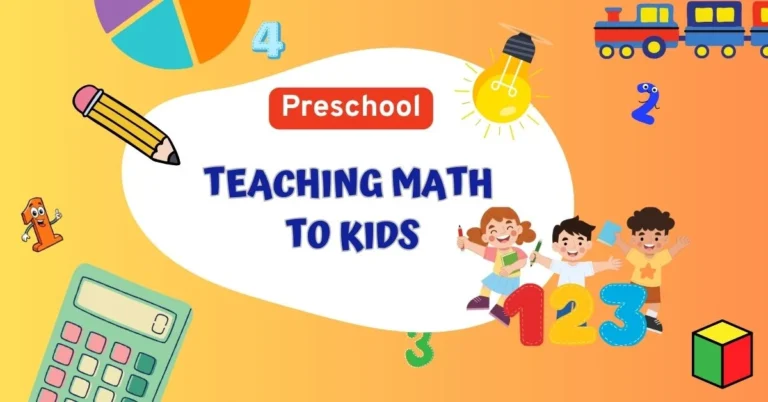A key component of developing early math abilities that will aid in your child’s cognitive development is teaching **numbers** to toddlers. It’s normal for parents and teachers to worry about when to begin and how to make learning enjoyable and interesting. Starting early and employing the appropriate techniques can create a strong foundation for future learning, regardless of your goals—whether they are to teach **count numbering** principles or more complex math milestones.
When Can Young Children Begin to Learn Numbers?
Toddlers constantly absorb information from their surroundings. Many babies can imitate simple counting sequences, such as “1, 2, 3,” and start to recognise numbers by the time they are 18 months old. But this is less about actual comprehension and more about memorisation.
Around 2 years old, toddlers can start saying numbers in order up to 10, but understanding the concept of well counting (where numbers represent quantities) typically begins between 2 and 3 years old. This is when children will start connecting the number words to actual items and objects.
Math Milestones by Age
Every child develops at their own pace, but here is a general guide to math milestones by age:
| Age | Math Milestones |
| 18 Months – 2 Years | Recognise and mimic numbers (counting up to 3). |
| 2 – 3 Years | Begin to understand counting (quantities) well Identify and count up to 5 objects. Recognise written numbers 1-5 Point Shapes |
| 3 – 4 Years | Identify and count up to 10 Recognise written numbers 1-10 Name basic shapes Draw basic lines (| __ / \ C) |
| 4 – 5 Years | Identify and count up to 20 Count and recognise written numbers 1-20 Write numbers 1-10 Name and spell basic shapes Begin to count by 10s and understand simple addition |

How to Make Learning Numbers Fun for Toddlers
Here are some tips for turning a numbers activity for toddlers into an engaging experience:
1. Use Everyday Moments
Numbers are everywhere! From counting the steps as you climb the stairs to counting the apples in your grocery cart, incorporate count numbering into your toddler’s daily routine. By doing so, learning becomes a natural and enjoyable part of their day.
2. Engage with Number Crafts for Preschoolers
Creative number crafts for preschoolers can turn math into a hands-on experience. Try these activities:
- Number Sorting: Sort and count into groups using vibrant buttons or beads.
- Counting Caterpillar: To make a caterpillar, have your toddler cut out numbered circles and adhere them in the proper sequence.
3. Explore a Counting by 10s Chart
A counting by 10s chart is a wonderful tool to introduce toddlers to number patterns. A great way to teach children number patterns is with a counting by tens chart. Early exposure will help them learn counting in larger quantities as they develop, even though they might not fully understand the concept at first.
4. Read Number Books
To keep toddlers interested, try Chicka Chicka 1, 2, 3, or Ten Little Ladybirds. As math ideas are introduced, your toddler’s attention will be captured by the lively visuals and rhythmic language.
5. Incorporate Technology (in Moderation)
Interactive educational apps and videos can enhance the learning experience. Look for apps that focus on counting, sorting, and recognising numbers in fun and creative ways. Just remember to keep screen time balanced!
When Should Kids Be Able to Count to 10?
Many toddlers can count to ten with assistance by the time they are three years old. Repetition is crucial for learning at this point, so promote regular practice with games, songs, or easy counting tasks. When should children be able to count to ten on their own? Depending on the child, this skill usually develops between the ages of three and four.
Engaging Activities for Two-Year-Old Children with Numbers
This age group of toddlers enjoys hands-on activities and sensory play. Here are some suggestions to add enjoyment to learning:
- Counting Snacks: Use small snacks like crackers or raisins to practice counting. “Let’s count out 5 crackers for snack time!”
- Number Puzzles: Simple puzzles with numbers help toddlers begin associating numerals with quantities.
- Playdough Numbers: Roll playdough into numbers, combining sensory play with early math learning.
The Importance of Well-Counting Skills
Mastering well counting—the understanding that each object corresponds to one number—is a key milestone for toddlers. To help them develop this skill:
- Use objects that your toddler enjoys, like toy cars or building blocks.
- Count together slowly, pointing to each object as you say the number.
- Encourage and praise their efforts, even if mistakes happen.
Tips for Teaching Numbers Effectively
Here are some professional pointers to help you effectively and engagingly teach numbers:
- Have patience: Each child grows at a different rate. Honour minor accomplishments and don’t worry if they don’t grasp the idea right away.
- Be Patient: Every child develops at their own pace. Celebrate small victories, and don’t stress if they don’t immediately understand the concept.
- Use Repetition: Toddlers thrive on routine. Incorporate number activities for toddlers into daily life for better results.
- Follow Their Interests: Tailor learning to your child’s interests. If they love animals, count their toy animals. If they like drawing, count crayons together.
Final Thoughts
The process of teaching children numbers is enjoyable and fulfilling. Your child will gain a strong grasp of counting if you start early, use everyday situations, and involve them in practical activities like preschool number crafts. This foundation will set the stage for more advanced math concepts as they grow.
So, gather some toddler number activities, sing a few number songs, and watch your toddler discover the world of numbers, one step at a time! For even more resources and worksheets, visit Ideazsuper—where we offer free and paid English, Urdu, and Math worksheets for preschoolers to make learning both fun and effective.
FAQ’s
“Well-counting” means understanding that each object corresponds to one number word (1:1 correspondence). This is a key milestone in early number skills. For example, pointing to each toy car and saying “one, two, three” demonstrates this concept.
Every child develops differently. If your toddler isn’t counting yet, it doesn’t necessarily mean there’s a problem. Continue offering playful, low-pressure number activities. If concerns persist around age 4–5, you might consult a preschool teacher or child development specialist.
Short, frequent sessions are better than long ones. Incorporate counting into daily routines (mealtime, walk, toys). Repetition and consistency help solidify skills. But keep it fun — avoid turning it into a test.
